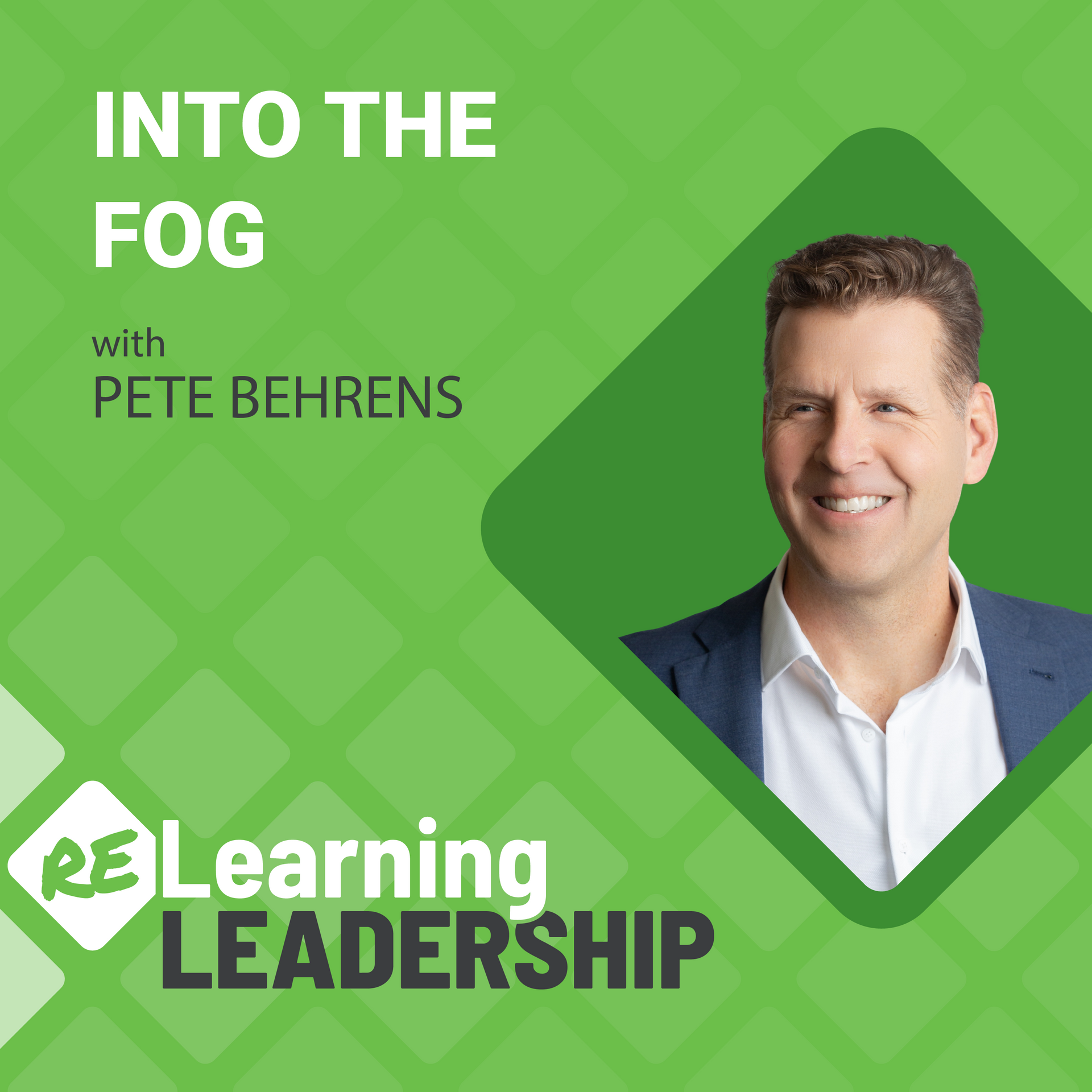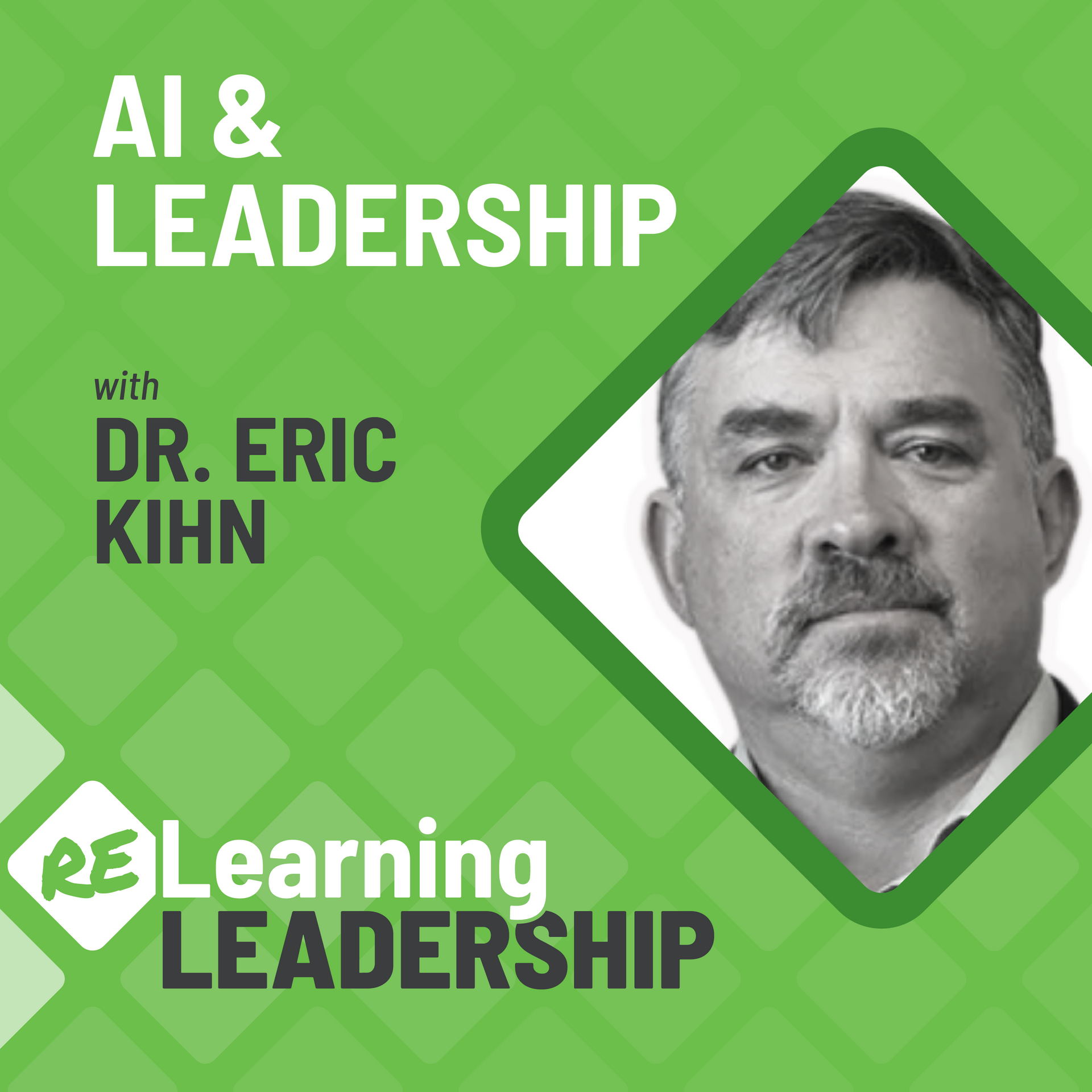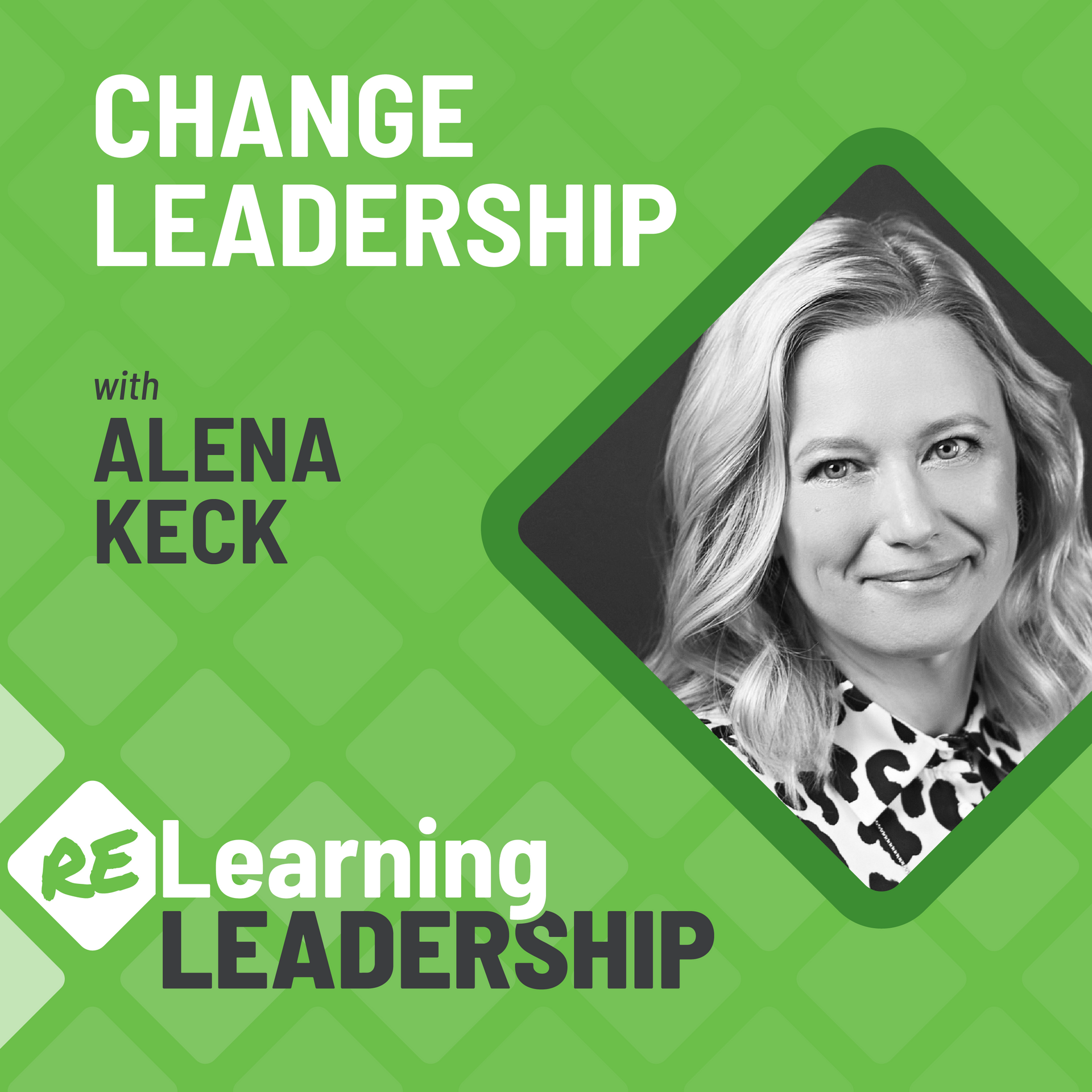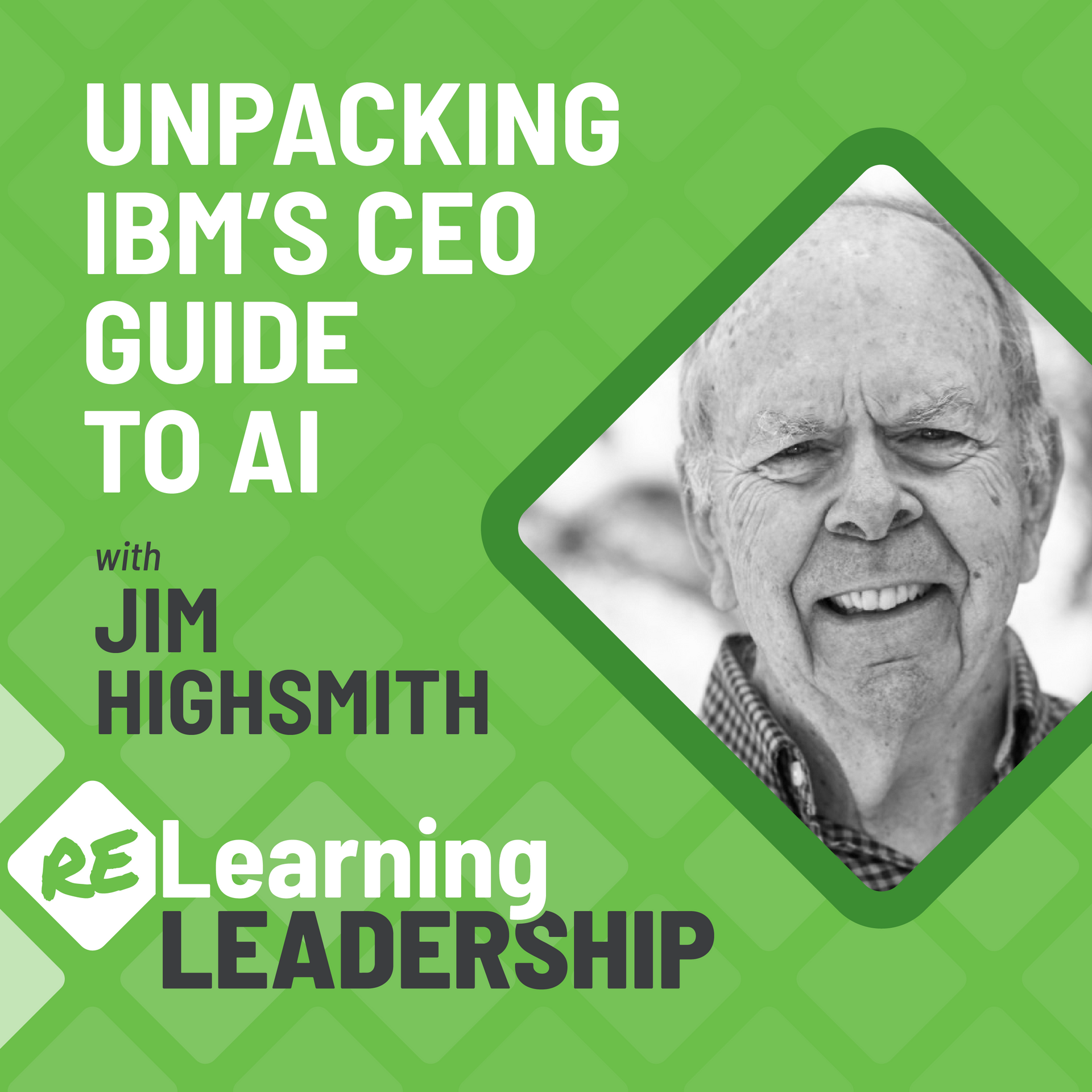4: Leading from the Middle
How much influence do leaders in the middle of an organization really have?
Travis Matthews, a Director of IT Solutions, shares his story about the challenges with leading change from the middle of the organization and the skills required to do it well.
Following Travis’ story, Karen Kemerling, a brain-based leadership coach, joins Pete to discuss Travis’ change story and what we can (re)learn to be more effective catalysts for change in our organizations.
Travis Matthews, Director of IT Solutions
Travis is a passionate and experienced agile, engineering, and financial services leader committed to exceeding customer expectations and leading them from idea to realized business value. He seeks to provide visionary and supportive leadership that empowers teams to do their best work and believes the best form of leadership is by example and showing genuine care for others. He is seen as a transformative and trusted leader by colleagues and partners who understands and demonstrates that empathy, communication, and collaboration are keys to building high-quality solutions.
Connect with Travis
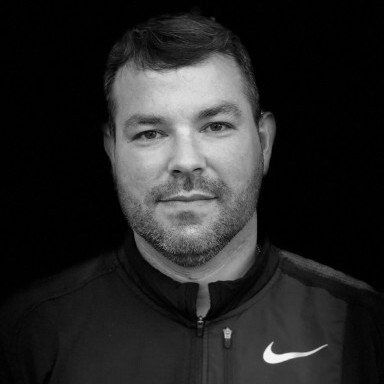
Karen Kemerling, Ph.D., Leadership Coach
Karen is a brain-based leadership coach. She brings 30+ years of leadership experience heading all aspects of business as a CIO and COO. In 2011, Karen was nominated by the Denver Business Journal as the CIO of the year in the Non-Profit Sector. In 2015, she was also voted one of the top 3 Business Women of the Year in Denver. Karen received her Ph.D. in Management and Organizational Development with a focus on the productivity of remote teams.
Karen is also an ALJ Guide
Connect with Karen
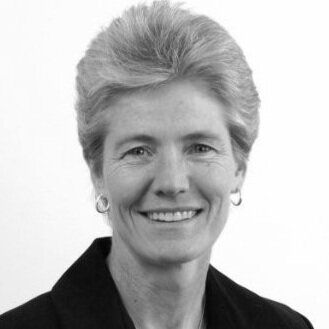
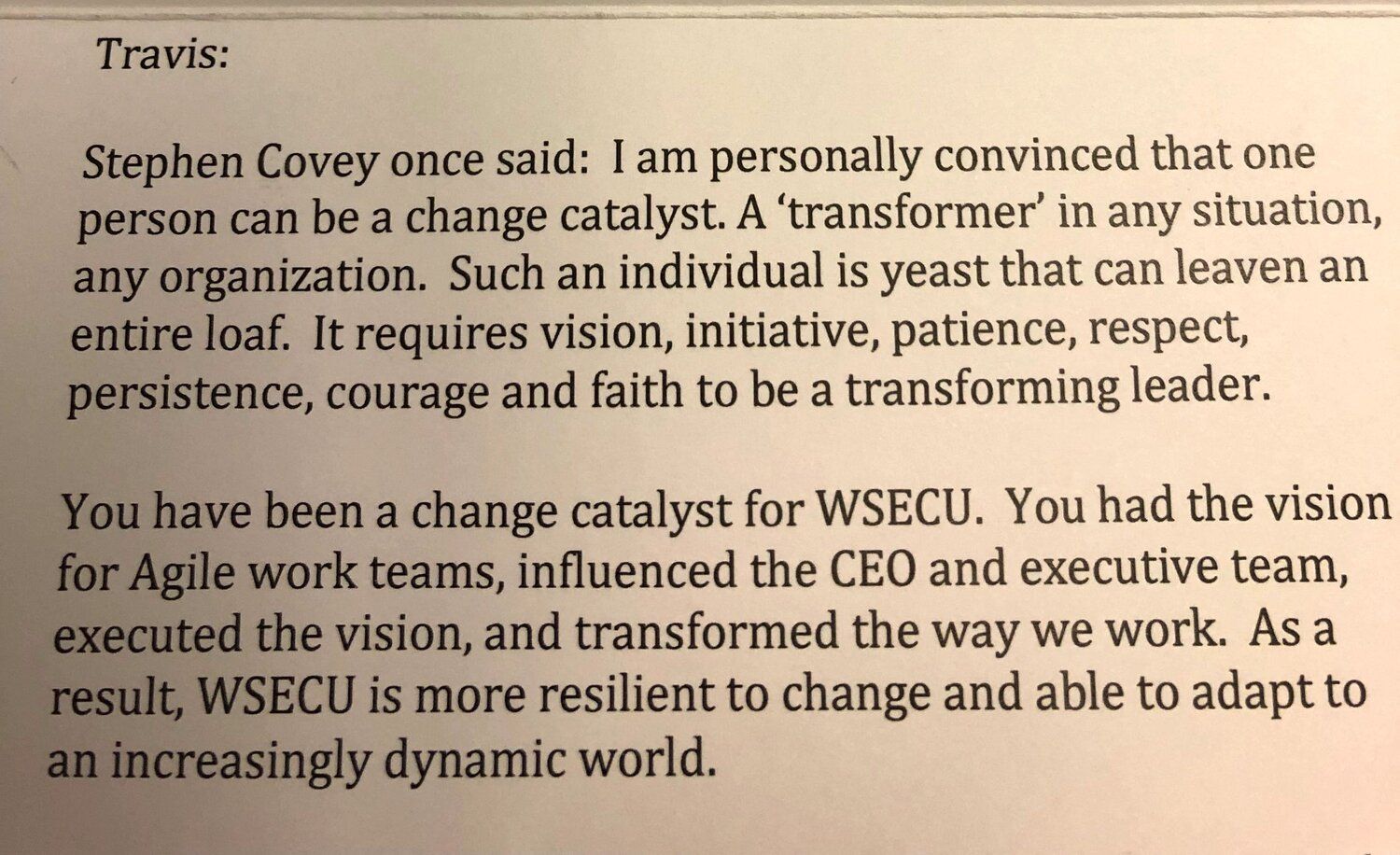
A positive impact
How do we know Travis had a positive impact on his organization?
He received direct feedback and Travis shared that feedback with us.
Relearning from Travis' change story…
What can we learn from Travis’ story?
Anyone can lead change. In our experience, everyone has the capacity to lead and influence others. Travis’ story is a great reminder that it is not as much about skills and competency as it is how you use those in relationships with others. Building trust, having confidence in your experience, demonstrating character, and connecting with others is critical to influence, regardless of your position. We call this leaderSHIP with a focus on the SHIP (or action) of leading.
Organization Change = People Change. Leaders are often challenged with changing organizations because of the complexity of the roles, responsibilities, processes, culture, etc. that need to be impacted by that change. However, when you boil it down, organizations are human systems and to change an organization requires aligning and influencing people towards a common new future.
Leadership = Relationships. Travis’ success as a catalyst for his organization was due to his effectiveness with relationships. From his ability to connect to his CEO, to building trust on his task force, Travis demonstrated a competency and character that opened others to allowing him to lead.
Agile Transformation is an Organizational Change. While this story is an agile transformation story, there is nothing particular about agile when it comes to organizational change. You can apply the same principles to ANY organizational change. In agile transformations, organizations will focus on agile values like transparency, feedback, cross-functional teams, empowerment, and particular agile-related roles.
Episode Transcript
Pete Behrens:
How do you lead change and influence others from the middle of the organization?
Welcome to another episode of relearning leadership, where we explore a specific leadership challenge and break it down to help improve your leadership, your organization, and even your personal life. Today I'm joined by Travis Matthews, a director of IT solutions in a mid-size financial cooperative. As a middle manager, Travis is squeezed between the goals of senior leadership and the execution through his and other teams. And because the organization's feeling competitive pressures, Travis has placed on a task force to help lead an organizational change to improve the responsiveness of his broader organization.
Travis Matthews:
We're trying to stay competitive in the market, like we have to move faster.
Pete Behrens:
This is the story of how Travis navigated both.
I'm your host Pete Behrens, founder of the Agile Leadership Journey and 30 year veteran in corporate leadership, both as a leader myself and in guiding other leaders. And as an engineer by profession, I now help leaders optimize their people systems to become more focused, responsive, and resilient to change. I'm excited to share Travis's story with you and following our dialogue, I'm joined by Karen another 30 year leadership veteran and coach to dissect what we relearned.
Karen Kemerling:
One of the nuggets that I think we can all get is this whole concept of self-awareness.
Pete Behrens:
... and how you can improve your own leadership to lead change more effectively from the middle. Let's dive in.
Hey Travis, welcome to the show.
Travis Matthews:
Thanks Pete. Glad to be here.
Pete Behrens:
Travis, to provide us some perspective of your director role, could you describe how you fit in your corporate structure?
Travis Matthews:
Sure. Yeah, kind of right in the middle. We have our senior executive team, our C-suite then vice presidents and then I'm at the director level then after that we have our manager and team leads.
Pete Behrens:
Yeah. That's one of the things we think about is the manager's squeezed in the middle. You pressured from above and challenged below. I can imagine you probably feel a little bit of that pressure.
Travis Matthews:
Yeah. It's an interesting place to be for sure. You're caught two worlds of the strategic and where the world is trying to go in the trenches with staff and trying to meet their needs.
Pete Behrens:
And I like your story because I think so many people can relate to it as a middle manager how can we influence others and lead change? So let's take a look at your story a little bit, provide us some context.
Travis Matthews:
For listeners that might not be familiar with credit unions were a not-for-profit organization, we're volunteer board and our credit in particular we're very heavily involved in the community. The organization is very service driven. We're here for our membership and we always talk about differentiation. How can we be different? Obviously we're a credit union and there are lots of credit unions or a medium sized business. So we have 700 employees. So when you put us up against a Wells Fargo or WESCU, we're pretty small. So the resources we have to kind of innovate and move forward are limited, but like how do we maximize that traditionally. We're a risk adverse industry, right? Like, so how do we move faster?
Pete Behrens:
What's you're describing as think as being felt by the financial industry overall. A highly competitive and disruptive environment with Apple introducing credit card and Google finance for investing. I mean, I can imagine your organization's feeling that competitive pressure as well.
Travis Matthews:
Absolutely. Yeah. The Neo banks, just the consumer demand, right? The Amazons, the Googles, the Facebooks of the world that are... the digital delivery that's happening in the expectation that consumers have is definitely putting pressure on financial services.
Pete Behrens:
Had with this organization for quite a while, and so maybe just give us a focal lens of what we might be talking about at the story.
Travis Matthews:
I was introduced to Agile scrum kind of in the late two thousands and kind of came back excited and invigorated like, Hey, I really think this framework in this way of working can really benefit our organization. It seemed to be a great fit from a cultural perspective. And so we're a very collaborative culture. I don't call it naivety, but the organization wasn't quite ready, but we did experiment for a while.
Pete Behrens:
You're reminding me of my own workshop participants who often leave the classic sighted and only to be deflated and brought back to the real world upon returning to work.
Travis Matthews:
Yeah, totally. So I felt like 2010 to 2014 I actually left the organization for about three years and then WSSU reached out to me and asked me if I was interested in coming back for the role that I'm in now. And so I did.
Pete Behrens:
It's amazing how changing your organizational context can provide a new perspective. It lets you separate from that day to day view and really pull back and see the big picture. For context, could you describe your new role?
Travis Matthews:
The director of IT solutions role, so I came back to lead a couple of engineering teams, a data services team.
Pete Behrens:
Okay. So you're a new director focused on leading a couple of engineering teams, but how did you get involved in this broader change initiative?
Travis Matthews:
My leader created the burning platform in the conversation with the broader organization. As things got off the ground from a formal perspective, it was a creation of a cross-functional leadership team. And it was invited to be part of that as essentially an Agile coach for the organization. Just a little side note, as I came back, I'd had a dialogue with the CEO and I was able to build a rapport with him and we would talk about some of these, I would get more complex topics and I would talk to him about scrum and Agile.
Pete Behrens:
So again, kind of thinking about this concept leading from the middle. So this cross-functional team forms, you're a part of it, but my guess is you're not running it?
Travis Matthews:
I'm not.
Pete Behrens:
How does that feel to you in a sense of, okay I'm here, I'm a subject matter experts of Agile, but in a sense again, you're how do you influence that team when you're not the one in charge of it?
Travis Matthews:
For me, it's about relationship and building kind of that rapport with colleagues. I haven't been one that lets titles really get in my way. Obviously not being afraid to have a conversation with the CEO about a certain thing, or give him some information and say, "hey I really think this could benefit the organization." So that has been helpful for me. And I think being genuine and authentic about it, it really for betterment of the organization. So people kind of know what your motives are and how do they know that? They know that cause they have a relationship with you.
Pete Behrens:
People often say, what is it like to influence and what I'm seeing from you in a sense, regardless of position, regardless of the fact that you're not in charge, you are influencing, you're having dialogue with the CEO, you're having dialogue with other stakeholders about what this means and some of the concepts and sharing information with them, which is definitely a form of influence.
Travis Matthews:
Yeah. And ultimately as a leader, you want to provide value to the organization. So it's not all talk, right? So there's obviously you're able to execute and perform and see the team to be successful. So, I think having a track record is critical too. Like it takes a while at times to have that influence.
Pete Behrens:
What did you find most challenging in that starting point or in the early phases of that?
Travis Matthews:
I think number one is probably the impact of people change. There's a mission why we're there, right? We're there for us to serve our members and there is an attitude of service, but that is made up of all the people that want to serve are very collaborative culture. But there is a that the, maybe consensus building or not where we call the 'Northwest nice don't want to hurt somebody's feelings.' And so I think one of the nuggets I've taken away in this journey is that don't necessarily talk about changing culture. Just talk about doing the right thing.
Pete Behrens:
I like the way you're connecting culture to people. Many leaders I think struggle with this intangibility of culture, but I think you've made it more real for us. You're sharing, it's a reflection of your own authenticity and these trust relationships you've built. So with people change being the most challenging, what did you find to be the most useful in helping you lead change from the middle
Travis Matthews:
At the time and the kind of the critical mass of this gain off the ground I was going through, to organization that had its own leadership training, and I think that the whole discovery for me was a greater sense of self-awareness and understanding other perspectives was probably one of the bigger tools for me and trying to say, "okay, I'm super passionate. And how does that come off? Well, how do I show up to people when I'm overly passionate. Do I come off as a zealot about Agile?" And so I think gaining greater self-awareness was probably the biggest growth area for me over, I would say it was a period of almost a year. I was doing both of those classes at the same time.
Pete Behrens:
Interesting here is that you're involved in a critical change initiative, but you're also involved in a personal change initiative. Leaders often question me whether or not taking time for self focus would be a distraction from their work focus. I'm wondering, did you find these to be complimentary or did you struggle to manage both of these at the same time?
Travis Matthews:
Yeah, no great question. I naturally am self-effacing. It's a lot of self analysis was probably not something I was excited about, but it was really helpful to take the time to understand how you're wired. And a lot of times we know who we are and we want to move forward and just get the job done. But I found it invigorating and energizing to kind of dig deeper with how, how do I become a better leader? I use that term a lot now. Like how do I show up to others? And then considering what do they want to hear from me? What is it they are seeking like those that I'm leading, how can I help them do their best work, be empowered?
Take COVID for example, huge impact to the world, to our country, to multiple industries in setting up what we will built with the Agile teams, we're able to adapt and change very quickly. Like when that thing hit the teams pivoted and said, okay, "how do we take away fees? How do we get cash to our members that are hurting, had just lost their job that went to unemployment. How do we help businesses? It's just on all the time to revenue stream and no longer available to do business because their clientele can't come to them." All those things. And so we, in a short amount of time, delivered a lot of value in those first few months of COVID.
Pete Behrens:
I love about what you're saying there though is we often interpret productivity and delivering more in that speed of delivery. And what's your illustrating here is actually a responsiveness and agility. It's not necessarily more, it's more appropriate at the right time. It might even be less, but it's perceived as more in a way that, because you're doing something that's targeted, tangible and quick, in a sense. And I think a lot of leaders miss that. I don't want to set this up as a Nirvana. I'm not suggesting that everything's perfect in your company and your company as in, that's not the point here, but you created some really positive change, but it was recognized and it was seen across the organization. I'm curious if that you found any particular skills valuable as you look back at that, what do you think was most valuable in terms of what enabled that to occur for you?
Travis Matthews:
Having the growth mindset is huge. Like being not afraid to fail, but it really is having that courage to kind of step out and take the risk and try something. Like if it doesn't work, okay, let's learn from it and let's try something different. Empathy and putting yourself in other people's shoes, understanding what their perspectives are.
Pete Behrens:
It sounds like your success, you can kind of tie back to the fact that you had to change. You had to kind of take some initiative and take some risks and in a sense, get vulnerable. Reflecting, taking a step back on this story, how have you changed? What's changed in you in a sense, how do you see yourself today differently than maybe a year or two back as you started this journey?
Travis Matthews:
Great question. I think the increased awareness of what influence you can have kind of greater capacity of leadership and then just challenging my own assumptions, I think are what I think is possible is another area for I can grow in.
Pete Behrens:
I love that. It's essentially... you're in a continuous state of relearning and you got to basically just step back and recognize that things are changing in front of you pretty quickly. As you think back, any advice you might give to others who are in this middle, in this frozen center of an organization?
Travis Matthews:
Let the people first realize why you're there. People need to know that you care about them. It's not just about the work, but them as people.
Pete Behrens:
It seems so simple, doesn't it?
Travis Matthews:
It really does, but I'm amazed. Like people take different journeys for it and I'm a very relationship oriented person. And there those folks that are maybe not wired that way, right? Like there's very more task-oriented type folks, there're process-oriented and you still got to get the work done. But my perspective is, if you take care of the people and they're excited and invigorated about the work it's going to get done, right? Like I really take the empathy of like, tell me the story what's going on. There's usually something behind the thing, right? If there's an issue at work, there's probably some issue outside of work as impacting the individual and understanding what that is and what the story is and saying, "how can I help you?" It's I love that sentence. 'How can I help.'
Pete Behrens:
Travis, you sound like the kind of manager I would like to have. I just want to say thank you for spending the time with us today. Thanks for sharing your story. Thanks for being vulnerable with us and in a sense emotionally, and just through the storytelling and I think other people will benefit from your willingness to share.
Travis Matthews:
Thanks Pete, I know it's been great. Thanks for having me on.
Pete Behrens:
I'd like to introduce Karen Kemerling with experience as a CIO, a COO, a CTO and 35 years of corporate leadership from startups to global enterprises. She's trained as an engineer and received her Ph.D. in management and organizational development, and she currently runs a brain-based leadership coaching practice, focusing on enabling leaders in developing growth mindsets. Welcome to the show, Karen.
Karen Kemerling:
Thank you Mr. Behrens, great introduction.
Pete Behrens:
I'm pleased to have you on the show and looking forward to our conversation and talking about Travis. I just had mentioned in the podcast that I'd love to have Travis as my own manager, his deep voice alone, I think makes me feel cuddled and safe.
Karen Kemerling:
I chuckle when I think about that, because I know you Pete a little do you like autonomy. And one of the highlights that I learned as I listened is that he's really good about trusting his people and expecting people to do the right thing. Besides his a silky smooth voice, yeah, he seems like a great manager. I can appreciate why you'd want to work for him. Me too.
Pete Behrens:
But before we maybe dive into his story, maybe I want to just maybe take a minute on his role as a director, and directors tend to be kind of micro-focused they're one level removed from first-line management, but yet they still kind of focus in the department of division of function. What is a core responsibility of a director? Just to kind of lay the groundwork here.
Karen Kemerling:
Yeah, it's a good question. I think every company has its own sort of expectations of that role, and the director role, you're right is pretty narrow and somewhat myopic about the task at hand. I think the director role is tough and I think it's clear. It comes out in the dialogue with Travis is that you are in the middle, things are coming down from the C-suite, the Vps, to the directors, and they're still expected to sort of get in the trenches and understand the work. So, I think in a lot of cases most people either want to get out of that role or go back to be an individual contributor, unless you really have a passion for people. And I think Travis does.
Pete Behrens:
Yeah, you're right. And a lot of directors I see have a challenge getting out of that conduit role. I use that term conduit because they're kind of just like a pass through. Just having to execute the strategy of top leadership and maybe they don't believe it, maybe they do, but it's difficult to in a sense break free from that direction and find your own path as a director. And I'm wondering as you listened to his story, maybe what jumped out to you.
Karen Kemerling:
I think he is a little unique in that he has a great relationship with the CEO. It's nice that they share dialogue and articles and so forth. So they're clearly have this bond. The other thing that Travis didn't say that I thought was kind of special and really jumped out to me is that he feels safe to try things and experiment. And that's a sign of the culture at that company. I put that in this space of building trust and that starts with inclusion. So then he has the opportunity from that step to learn and he wants to try things. He wants to experiment with agile within his function. And then across the company. He starts to become a coach for a leadership team, and then he can actually challenge the status quo.
Pete Behrens:
So, it sounds like we've got some safety and I know for a lot of our listeners out there, they're probably thinking if I'm not in a safe environment, if I'm not in a safe culture, is this possible? Or what additional would a Travis-like leader need to do in order to, in a sense, do what Travis did without having that safety net, any advice we could give to listeners on that?
Karen Kemerling:
You're right. If we step back and step away from Travis's kind of special situation, most people probably don't have what he has. And it's like, what could I do? And what I learned even from Travis is that you start where you are. And he did that. He did a lot of self-reflection as the leader and an awareness of, "I need to be empathetic" or "why am I talking?" Those kinds of things I think are very transferable outside of his scenario to others.
Pete Behrens:
Well, I'm glad you bring that up because it's definitely something I noticed as he was starting to share his story. It's almost like his organizational change journey was paralleling his personal change journey. And there's been many kind of experts in the field who talk about the standpoint that you're not going to get organizational change without leadership change, without a mindset change.
Karen Kemerling:
I think you're right. I think the person does have to have a desire for leadership and to challenge themselves a little. I think if you stay in your swim lane and don't think about it, it's not going to change. I think I'm going to dwell on trust because I think that's a key component, but building trust really starts with a couple of things. One is competence. Travis is very competent and he gets accolades for his skills and his knowledge and his experience, and then his reputation and credibility. And having some small wins create this situation where people in the company want to trust him. But the other part of the trust is his character. And this is the personal side we talked about where it's really his intent where he's caring, he's transparent, he's open, he's honest, he's fair, he's authentic. Those two things, so character and competence together generate this special trust. And I think that doesn't have to be Travis's company, that could be any company. And any leader in the middle could start there.
Pete Behrens:
I think what you're describing here is effective leadership as moving from director on up, it shifts from a focus on the work and the projects to the people. And what you're starting to see now is Travis has kind of made this shift, and Travis has been effective because of this shift. And so I'm wondering if they're kind of stuck in this kind of still focused on projects and work. Are there techniques that they can use or an approach that might consider to help develop this muscle?
Karen Kemerling:
He focused on awareness and really getting some feedback on his leadership. The intent of the whole program is really about practicing. What I learned and I think anybody can do this is to not try to put so much pressure to be like a switch, like I'm going to show up tomorrow and be the perfect leader. It's like no, I'm going to show up tomorrow and I'm going to be intentional about I'm working on my awareness and part of my awareness is that I may drive too much of the meetings others are not contributing and therefore I'm going to wait to speak until others have.
Pete Behrens:
So I think that's useful for a lot of leaders out there. And what I'm hearing in that response is there is no silver bullet, it's about intentional practice. And I would support that as well. I think this is a skill that can be developed, a muscle that can be developed, just like anything you do getting better at writing, getting better at communicating, being a better in focus on relationships is a muscle that can be built. I'm thinking about all those leaders out there on taskforce, on these initiatives where I'm not in charge, yet he seemed to play a very impactful role. So, how do other leaders out there create more influence or create more... Yeah, just sway in that team when they're not in charge?
Karen Kemerling:
Travis got that opportunity to lead that team, even though he's not leading by an own charge, he is leading, right? He's leading because he's competent and because of his character. And I would argue that the inclusion within that company and within that group is going to create innovation for that company. And I think that's applicable to every company.
Pete Behrens:
I think that's a really good point. This story was in a sense an Agile transformation story. And for the listeners out there, maybe don't quite understand that, I think we could just translate it to an organizational change.
Karen Kemerling:
Absolutely. I totally agree with you Pete. People are people, and as a doctor of organizational development, we learned like organization starts with an individual, then it's becomes a team, and then it's a department, and then it's a function. It starts with the person. And we all have a lot of the same DNA. We all want to be included.
Pete Behrens:
What I loved about Travis's story here is, and we've seen COVID be kind of that digital transformation trigger for many, many companies, but I loved about, they turned value into responsiveness and I love just how they're able to just, "what do our customers need right now?" And I thought that was really, really pointed? And you think about that, could that apply in non-pandemic times? What do our customers need now?
Karen Kemerling:
The other thing that I think hopefully will continue to grow is that within the credit union environment, the credit unions worked together. So competitors, right? So I know the financial industry a little bit, and I can tell you that Wells Fargo and Bank of America are not buddying up and trying to figure out how to work together. So, I think that's an opportunity for us to look at the future and say, rather than be competitors, yeah, we all need to make money. It's like, what are the things we could do together to make our products and services better for our customer, which at the end of the day seems to be the thing that drives company's success.
Pete Behrens:
Well, it's interesting you mentioned that, you look at the shift Microsoft has done, and obviously Microsoft is not a credit union. They're not that people organization, they're a competitive organization. And you look at the tenure shift from a Steve Ballmer to a Satya Nadella. And I would argue probably the most significant change was from a competitive-door, collaborative-focus. Collaborating with Google and Apple and say, "why aren't our products on an Apple platform? It's one of the best out there". And that shift in thinking about a both end, even in a competitive space, has propelled Microsoft's value. So, while you're saying maybe the other banks aren't doing it, it doesn't mean they couldn't.
Karen Kemerling:
I think you're right. People learn by example. So, if Microsoft is crushing it by working with Apple, you might be surprised pretty soon wells Fargo and Bank of America are working together. I mean, I don't want to pick on them, but I guess the point is valid. How can we both win?
Pete Behrens:
We're all kind of continuing to relearn our own leadership, and mindset, and what we've done in the past. I'm kind of curious, are you thinking about leadership differently? Following the story and maybe what's been refocused for you.
Karen Kemerling:
It's a lifelong thing. And one of the nuggets that I think we can all get is this whole concept of self-awareness. I have my opinion too, but a lot of times we see it our way, and our way is the way. And I think from Travis's dialogue and perspective, he tried to see it from the other person's perspective and I relate to that very much.
Pete Behrens:
Well Karen, I just want to say thank you for sharing your insights today. Thanks for providing us some, some analysis with Travis here. And I'd maybe just want to leave you with just the concept of number one. It's possible. Change is possible from the middle. And number two, as I'm hearing here, it starts with you. Find what you can do to start to change the relationships and start to reach out in those relationships. All organizational change is people change. what I heard you Karen say is, you've got to start to role model that, you've got to start to do that yourself before others are going to follow along. So, thanks again for joining us today and look forward to seeing you again soon.
Karen Kemerling:
Thank you Pete.
Pete Behrens:
Relearning leadership is the official podcast of the Agile Leadership Journey. It's hosted by me, Pete Behrens with analysis from our global guide community. It's produced by Gabe Gerzon and David Riemer, with matter communications, art designed by Nicole Bedard, music by Joy Zimmerman with editing by Ryan Dugan. If you love listening to this podcast, please leave us a review. And to relearn more about your own leadership, visit us at agileleadershipjourney.com.
Explore:
Recent Episodes

